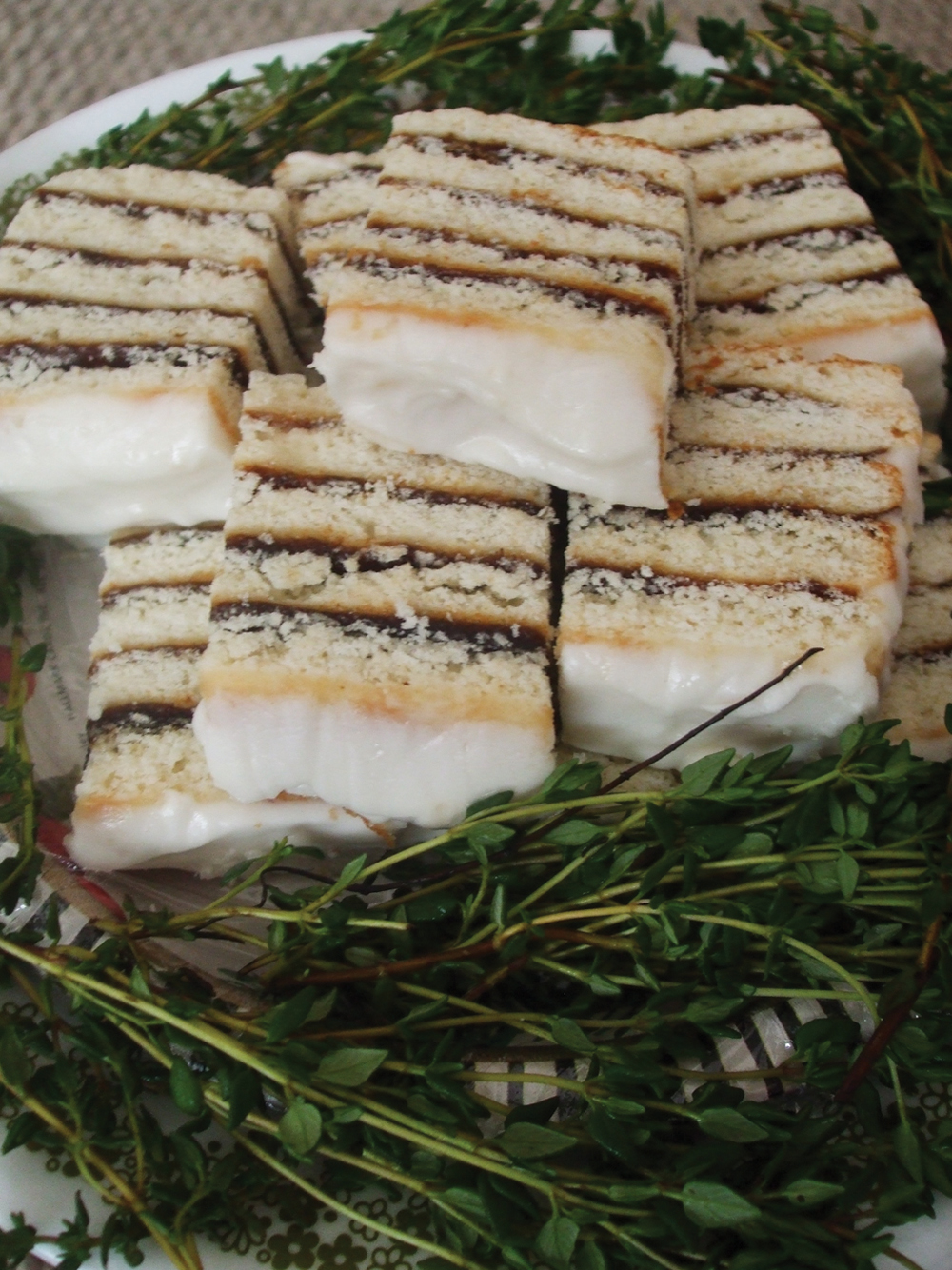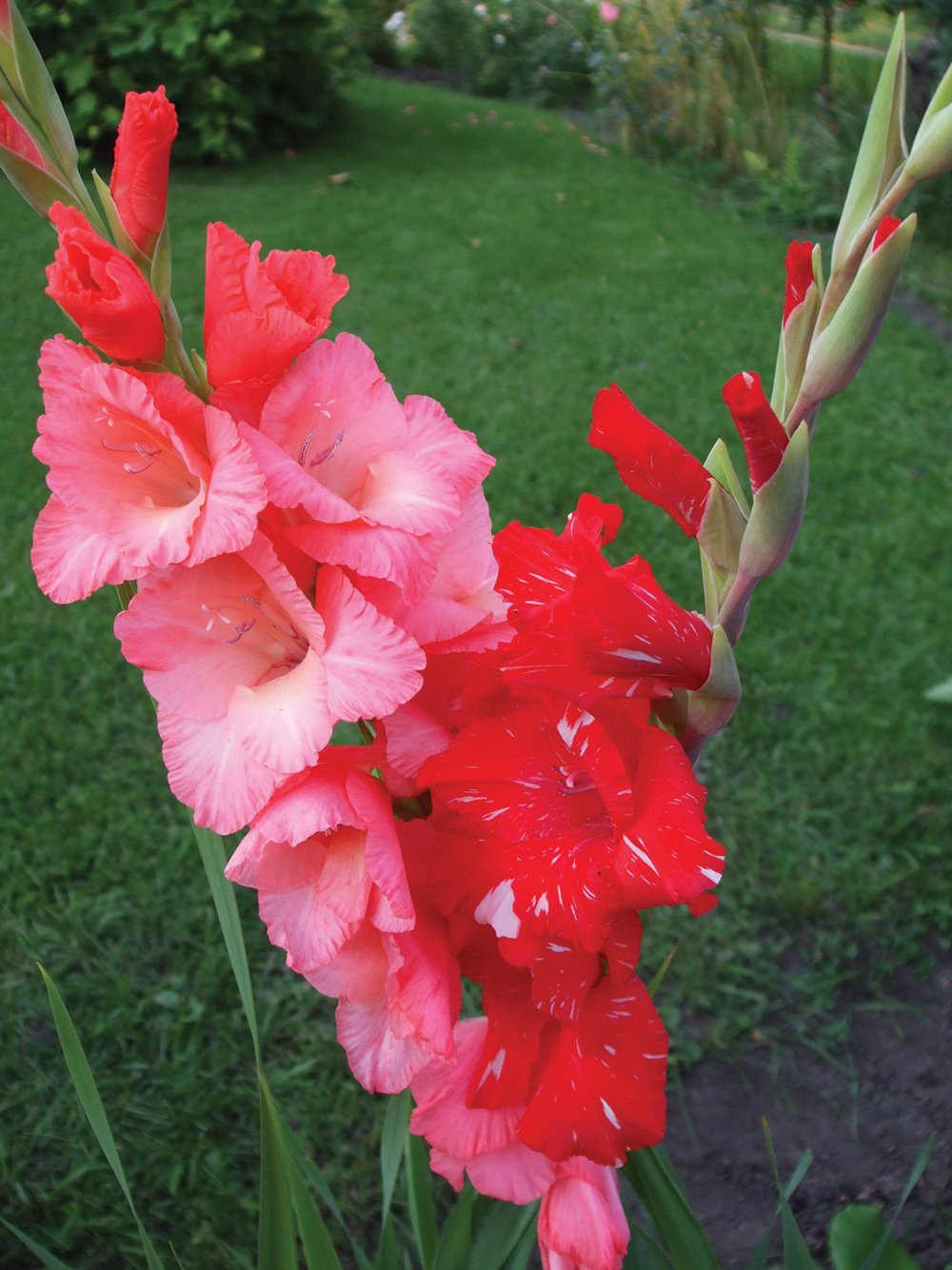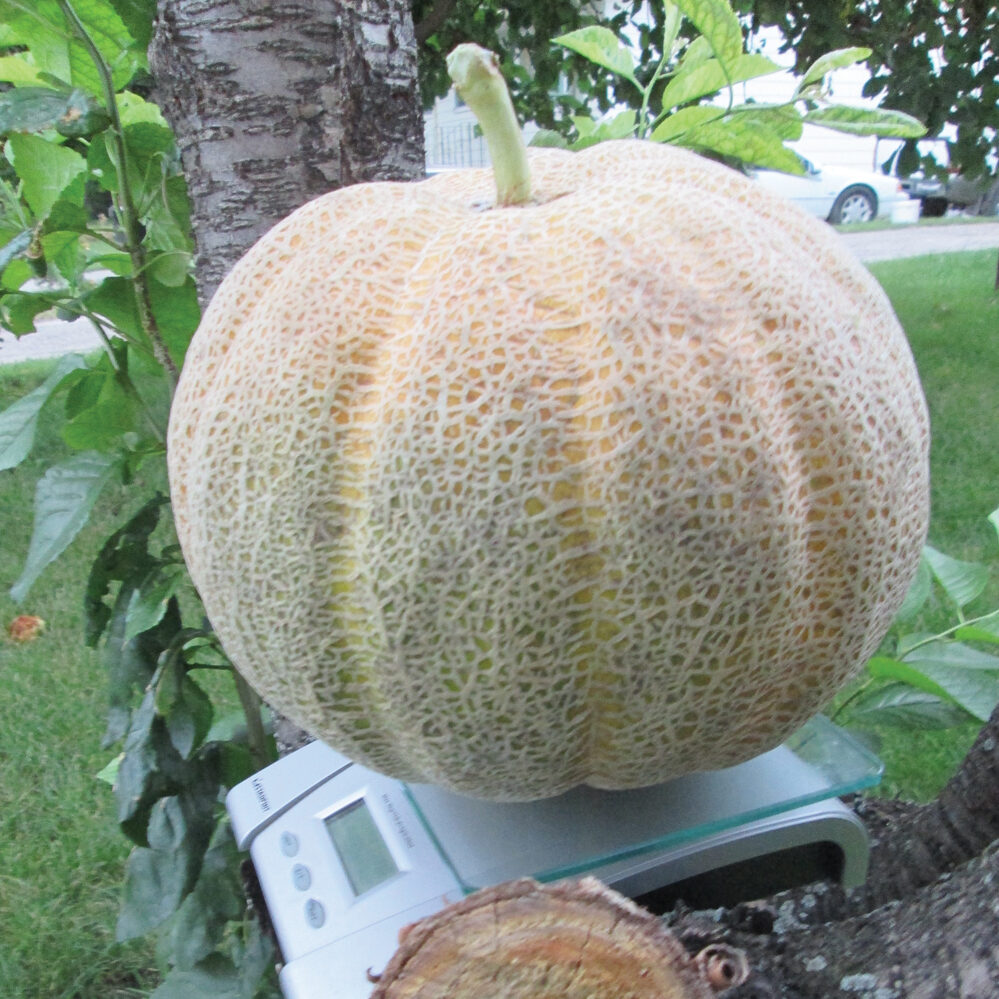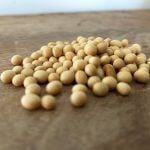So how’s everybody out there in Grainews country doing anyhow? Continuing research reminds us that home garden veggies, herbs and flowers, orchards and backyard-grown fruits along with field grains and wild forest plants all contain many powerful disease-inhibiting and healing nutrients. Reaping their protective benefits requires a lifetime of sensible eating and drinking habits while learning along the way. On the agenda is a glimpse at my Canada Day song, why every gardener should grow some thyme, and a cookbook released 30 years or so ago by a well-known country music singer who helped blaze the path for other women entertainers. A bit about wild lettuce, the natural vegetable tranquilizer begins this issue. Plus, I’m a patriotic kind of guy. A lot of folks heard me sing one of my originals on Canada Day. Although my Grainews readers won’t hear the melody you can certainly relate to the lyrics which I’m sharing next:
I’m Proud to Sing O Canada’
O how much I love my country, let me be a sign to you,
Read Also
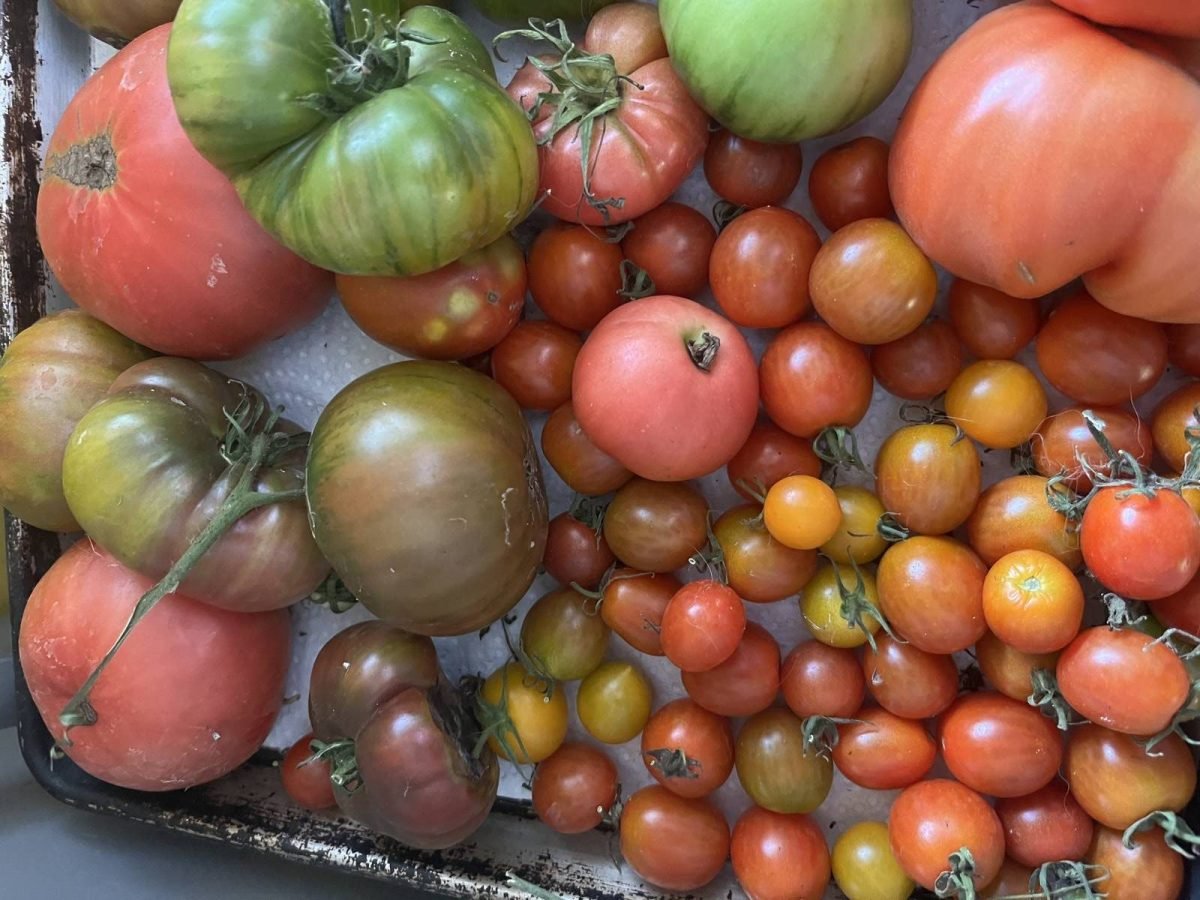
Great recipes rely on timely fall resource management
dee Hobsbawn-Smith recounts an early-September rush to get frost-sensitive Prairie produce out of the garden, into the kitchen and processed for storage.
May I demonstrate goodwill and let you be Canadian too.
We are citizens together, helping one another grow,
We have courage, strength and vision to achieve and pride bestow.
Refrain:
And I’m proud to sing O Canada,
For this country stirs my soul,
And I’m proud to be Canadian,
With a chance to reach my goal.
Will you work to build our country, proudly raise the flag on high,
Red for freedom, white for beauty, maple leaf and endless sky,
When we see what we’ve discovered, in each woman, child and man,
Born of all we’ve done together, we are all Canadian.
Repeat refrain.
Before proceeding further — it’s hat-tippin’ time. Welcome to all joining me on this Grainews page wherever you are. I’m a regular hat wearer and feel totally comfortable with some form of head covering but know when to remove it at appropriate times, too.
The best of ancient thyme
We’ve all heard expressions such as “time waits for no man, stop wasting time, and a stitch in time saves nine.” Then there’s the plant genus name, thymus. It’s derived from Greek words meaning soul or spirit. You may not know this but thyme has long been associated with burial practices going as far back as ancient Greece. Branches of fresh thyme flowers were strewn over caskets and planted at burial sites. In Egypt, thyme oil was used in preparing the body. Throughout history thyme has also been associated as a symbol of fortitude and strength of mind in the face of pain and adversity. It was used during the French Revolution to garner success in any righteous cause. Highland Scots concocted a beverage from wild thyme to give them courage. There are numerous accounts of people making both soup and beer from thyme that was regarded as a cure for shyness. If the soup didn’t work, thyme beer usually did the trick.
Take time to plant kitchen thyme in your garden
English thyme (thymus vulgaris) sometimes called French thyme is among the most popular and indispensable of herbs in the kitchen. Plants are often available at garden centres that have a herb section. Most thymes have similar growing requirements such as lots of sunshine and well-drained, almost gravelly soil. There are dozens of varieties, some of which are half-hardy perennials in Zone 3 with protection, and others that overwinter in Zone 4. They start easily from seeds, and readily grow from root cuttings or softwood cuttings taken from upper stems. Thyme gives a hearty flavour to poultry, meat and vegetarian soups, gravies, sauces and herbed vinegars. Garden thyme is the source of thymol, an ingredient often used in dental hygiene products due to its antioxidant and antibacterial properties. Thyme leaves can be made into a beneficial tea to treat coughs and upper respiratory complaints and thyme oil is made from a distillation process. Some beekeepers have successfully grown thyme plants near beehives as a food source. The flowers are said to contribute to an excellent honey product. Thyme oil or mashed thyme leaves gently applied to bee stings are said to alleviate the pain. We’ve all heard of mites devastating bee populations. Has anyone among our readership anything to offer from their personal experience that might be beneficial to bees and apiarists in that connection?
Cakes and country music
Yours truly was quite the baker at home when graduating from puberty into teen years. I made umpteen cakes and lathered them heavily with Seven-Minute Frosting. My brothers were my cake-tasting testers. They rarely gave me a thumbs-up but I knew from the empty cake plates with very few crumbs remaining that my frosted cakes passed their taste test.
If you were exposed to classic country music as I was, the name Kitty Wells will be familiar. Besides hundreds of recordings, she included a collection of down-home recipes in her “Queen of Country Music” cookbook and I have a copy. It’s signed in dark-black ink on the inside front page: Sincerely Kitty Wells 3-12-91. That’s about 31 years ago now. Besides her traditional music, Kitty exemplified cooking and baking. She spent countless hours between musical engagements in her kitchen preparing her favourite dishes and many of those recipes are in her cookbook. They range from appetizers and beverages to salads and soups. In the cake section, recipes such as: Hot Milk Cake, Hummingbird Cake, Sock-It-To-Me Cake and Cinnamon-Buttermilk Coffee Cake are provided.
I used to spin a lot of Kitty’s 78s when I was a country music DJ with my own program on radio. Out of the hundreds of songs she recorded, a couple of her favourites are: “Making Believe” and “It Wasn’t God Who Made Honky Tonk Angels.” What I appreciated about Kitty’s songs is I could always understand the words she sang — unlike so much of today’s songs with hard-to-decipher lyrics that prompt me to switch frequencies.
Seven-Minute Frosting
1 c. white sugar
1/3 c. water
2 egg whites
3 tsp. light corn syrup
1/4 tsp. salt
1 tsp. vanilla
Combine and mix well first five ingredients in a double boiler. Beat with a rotary beater until blended. (I call it a hand-held egg beater.) Place upper part with ingredients over boiling water in bottom section of double boiler and beat constantly until mixture will hold peaks. Remove from heat, add vanilla and beat until cool and thick enough to spread over the cake. Sprinkle top of frosting with toasted, sliced blanched almonds. Makes enough to cover 2 layers of an 8-inch cake.
What is wild lettuce?
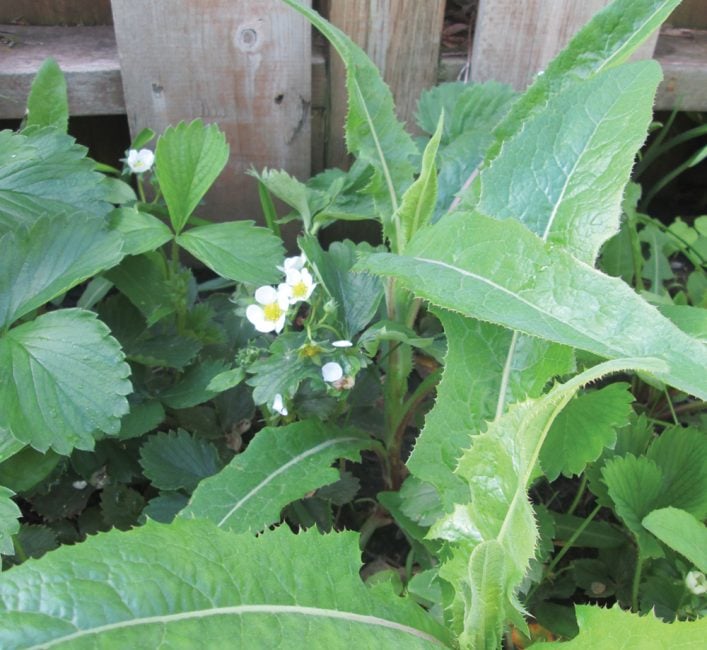
Some could actually be growing in your yard right now. This vegetable tranquilizer plant grows up to 1.5 metres (four to six feet) tall, has spiny leaves, tiny yellow flowers and mini seed puffballs similar to dandelion puffballs. There are two types of wild lettuce that are common over much of Canada and elsewhere throughout North America. Lactuca canadensis is commonly called tall lettuce or horseweed and is found from Nova Scotia to B.C. Prickly lettuce (Lactuca scariola) is commonly called compass plant that came from Europe and can be quite bothersome in cultivated fields. Both species seem uncertain deciding whether to be annual or biennial. Sometimes flowering and seeding occur the first year and other times the next step is delayed until the following year. Lactuca means “milk juice” and refers to the milky substance called Lactucarium which the plant bleeds out when cut. Said milky substance contains the natural chemicals lactucin and lacttucopicrin. Most people don’t know these substances contain deep painkilling properties. For folks just getting started with foraging and interested in natural remedies, wild lettuce is one of the most useful plants to easily recognize and learn about. There is so much to tell about wild lettuce so I’m saving the rest for next Grainews column and beyond if necessary.
Got a summer cold?
This may help. Here’s a recipe that traces its roots to both Mexico and Canada:
1 tablespoonful flaxseed and 2/3 cup chopped or minced onion. Simmer aforesaid flaxseed and onion in 3 cups of water until reduced to half volume (that is about 50 per cent of original). Remove from heat and stir in 1/2 cup honey. Once cooled, add 1/4 cup fresh lemon juice, or the juice of one whole lemon, straining out the seeds. Except for the lemon juice, it’s very Canadian.


